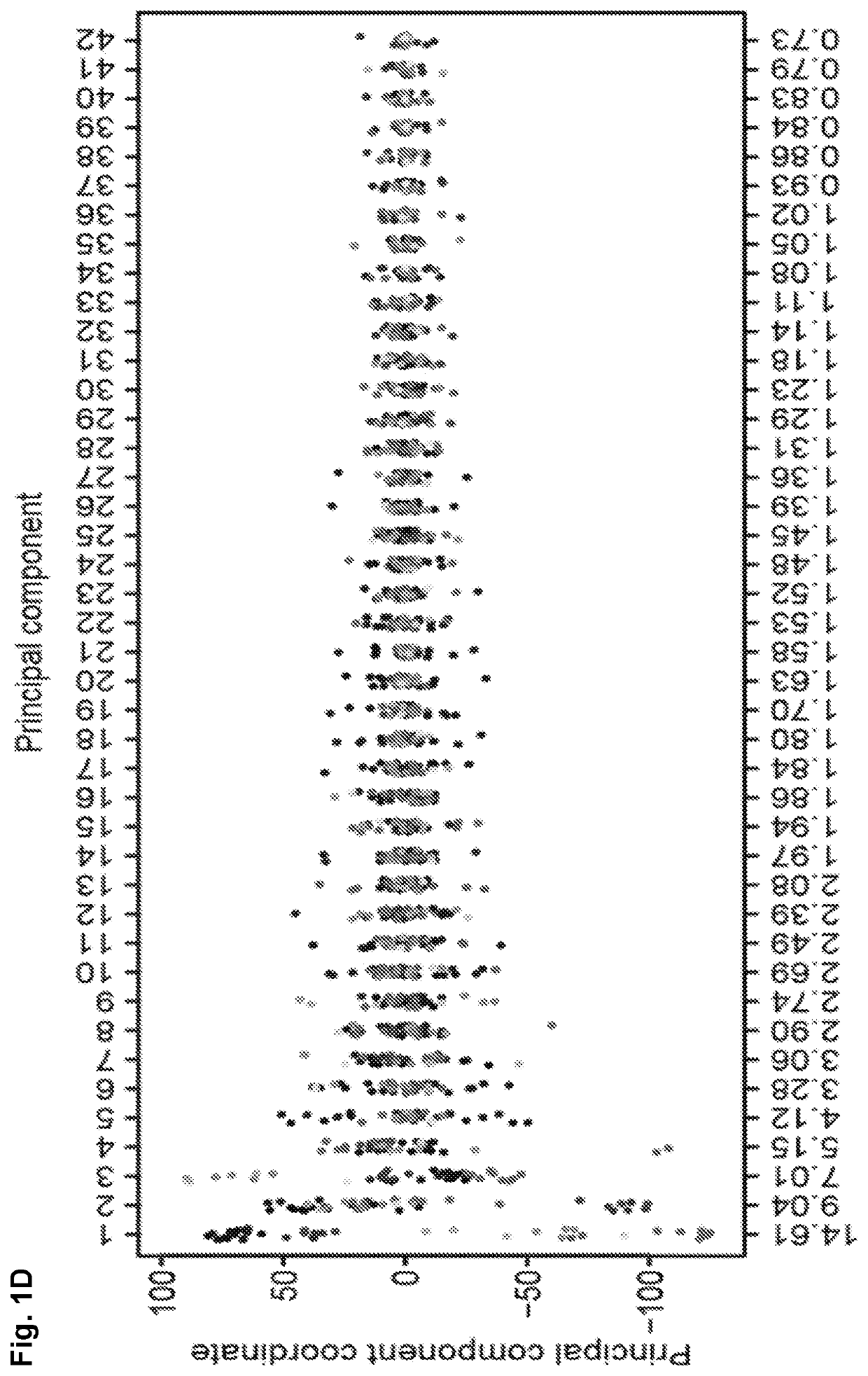Method to identify key markers of human pluripotent cell-derived somatic cells that predict molecular similarity to in vivo target cells
a somatic cell and molecular similarity technology, applied in the field of differentiation of cells from pluripotent stem cells, can solve the problems of poor prognosis, no effective treatment, limited interpretation and relevance of phenotypic data, and human and animal models
- Summary
- Abstract
- Description
- Claims
- Application Information
AI Technical Summary
Benefits of technology
Problems solved by technology
Method used
Image
Examples
example 1
Experimental Procedures for Sample Preparation
[0033]iMN differentiation was performed as previously described (Sareen et al., 2013). Sareen et al. (2013). Targeting RNA foci in iPSC-derived motor neurons from ALS patients with a C9ORF72 repeat expansion. Science translational medicine 5, 208ra149. HB9::GFP positive MNs and HB9::GFP negative cells were produced as previously described in Amoroso et al. (2013). Accelerated high-yield generation of limb-innervating motor neurons from human stem cells. The Journal of neuroscience: the official journal of the Society for Neuroscience 33, 574-586. Fetal tissue was obtained from the Birth Defects Research Laboratory at the University of Washington under their approved IRB, consent, and privacy guidelines. All protocols were performed in accordance with the Institutional Review Board's guidelines at the Cedars-Sinai Medical Center under the auspice IRB-SCRO Protocol Pro00021505. Total RNA was isolated from all frozen spinal sections using t...
example 2
Tissue Culture and Processing, RNA Extraction, and Immunofluorescence Analysis
[0034]iMN differentiation was performed as described in Sareen et al., 2013. Briefly, mTeSR1 medium was removed from confluent iPSC cultures and replaced with Iscove's modified Dulbecco's medium supplemented with 2% B27-vitamin A and 1% N2 (neural induction medium) for six days. The cells were then Accutase-treated to single cell suspension, and centrifuged in 384-well PCR plates in the presence of Matrigel and the neural induction medium (now using Neurobasal medium) that was further supplemented with 0.1 μM all-trans retinoic acid. After suspension culture for nine days, 1 μM purmorphamine was added to the medium and aggregates were cultured for another eight days. Thereafter, dissociated aggregates were plated onto poly-ornithine / laminin-coated coverslips and cultured in Dulbecco's modified Eagle's medium (DMEM) / F12 supplemented with 2% B27, 0.1 μM all-trans retinoic acid, 1 μM purmorphamine, 1 μM dibut...
example 3
Expression Data Pre-Processing
[0037]Previously published mRNA microarray expression data from human fibroblasts (n=2), embryonic stem cells (ESCs) (n=2), and iPSCs (n=3) were chosen to represent cell types relevant to human somatic cell reprogramming (Chin et al., 2009; Maherali et al., 2008). Chin et al., (2009). Induced pluripotent stem cells and embryonic stem cells are distinguished by gene expression signatures. Cell stem cell 5, 111-123. Maherali et al. (2008). A high-efficiency system for the generation and study of human induced pluripotent stem cells. Cell stem cell 3, 340-345. To represent mature in vivo whole spinal cord, the Inventors obtained previously published mRNA microarray expression data from adult spinal cords (n=8, age range=23-53 years, median=36.5 years) (Roth et al., 2006) and for mature in vivo spMNs data from laser capture micro-dissected spMNs from familial ALS and control patients (Cox et al. 2010; Kirby et al., 2011). Roth et al., (2006). Gene expressio...
PUM
| Property | Measurement | Unit |
|---|---|---|
| temperature | aaaaa | aaaaa |
| average linkage distance | aaaaa | aaaaa |
| color | aaaaa | aaaaa |
Abstract
Description
Claims
Application Information
 Login to View More
Login to View More - R&D
- Intellectual Property
- Life Sciences
- Materials
- Tech Scout
- Unparalleled Data Quality
- Higher Quality Content
- 60% Fewer Hallucinations
Browse by: Latest US Patents, China's latest patents, Technical Efficacy Thesaurus, Application Domain, Technology Topic, Popular Technical Reports.
© 2025 PatSnap. All rights reserved.Legal|Privacy policy|Modern Slavery Act Transparency Statement|Sitemap|About US| Contact US: help@patsnap.com



